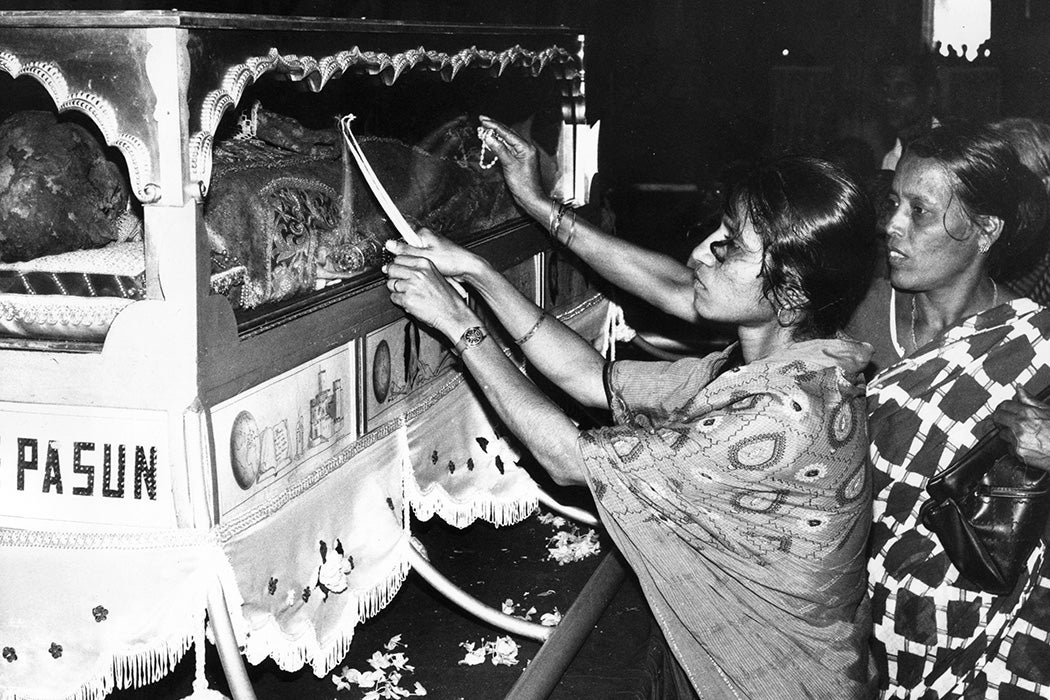Francis Xavier was a key figure in early modern Catholicism: a co-founder of the Jesuit Society and an important missionary in Portugal’s Asian colonial empire. But, as historian Liam Matthew Brockey writes, one of the most significant aspects of Xavier’s meaning for the Catholic Church is what happened after he died. Brockey writes that Xavier died in early December 1552 in a straw hut on Shangchuan Island, off the southern coast of China. He had been attempting to meet the emperor, but had succumbed to disease.
A Chinese servant named António, who was the only person to witness his death, described his face immediately afterward as “happy and greatly amazed, so ruddy and pink that he appeared to be alive.” Recognizing the potential significance of his bones in a Catholic world obsessed with relics, his servants filled his coffin with lime to speed decomposition. The body was buried from December until February, when Portuguese merchants exhumed it in the hopes that it would be fully decomposed and the bones could be shipped to India. Instead, they found the body still whole. One man reportedly cut flesh from one of the thighs and brought it to the ship’s captain, who, finding it had no foul smell, agreed to bring the body on board.
Arriving in Malacca, in what’s now Malaysia, the body was greeted by believers who removed it from its coffin and reburied it. But the pit they dug was too small, and when workers tamped down the dirt, they broke the neck and a knee and flattened the nose. This damage was discovered in August, when a group of Jesuit visitors exhumed and examined the body. Despite the broken bones, according to contemporary accounts, they not only found it uncorrupted but observed fresh bloodstains on a silk pillow that had been placed under the neck.
Weekly Newsletter
The Jesuits then moved the body thousands more miles to their Asian headquarters in Goa, India, Brockey writes. There, crowds that arrived to kiss Xavier’s feet and touch their beads against the body were so thick they nearly broke the rails in the church. One worshiper seeking her own relic reportedly bit a toe off the body, causing it to bleed fresh blood.
After a series of official inquiries launched by Portugal’s King João III confirmed the body’s uncorrupted state, officials closed the coffin for nearly half a century. In 1614, Pope Paul V called for Xavier’s right arm to be removed and brought to Rome as a relic—a particularly striking move since he was not yet officially recognized as a saint. When the Goa Jesuits opened the casket, one observer, Simão de Figueiredo, wrote that “his right eye was open and so fresh that he seemed to be alive; and his cheeks were, too, and the fingers with which he held the divine sacrament.”
Today, Xavier’s body remains in Goa, and public viewings of it are still held every ten years.







